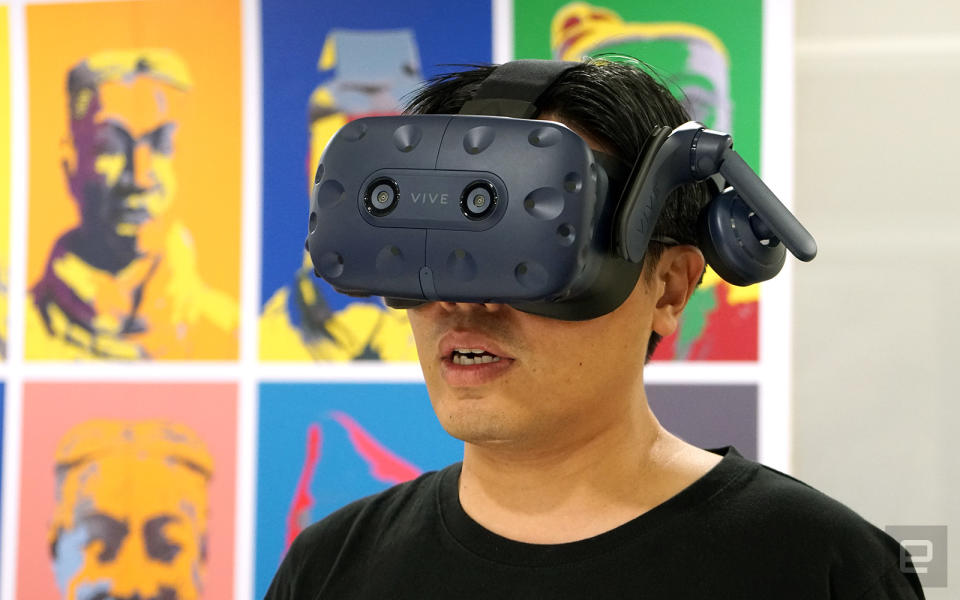HTC Vive Pro's dual cameras can apparently track hand motion
VR developers will be able to tap into this module for new interaction methods.
When HTC unveiled its higher-end Vive Pro VR system back at CES, the company was suspiciously quiet about the dual cameras on this VR headset: there were no related demos, and the company reps remained tight-lipped. The smart-ass in me assumed that based on the similar looks, this module was probably a variant of the inside-out tracking sensor on the standalone Vive Focus, while others speculated that it would bring AR capability. Well, today we finally have an answer: it's actually a depth sensor, and it'll apparently enable basic hand tracking without additional hardware.
This new bit of information came straight from the horse's mouth. By that I mean HTC Vive's Vice President Raymond Pao, who I bumped into at the company's Shenzhen event earlier this week -- it was celebrating the commencement of the Vive Focus' shipment, as well as introducing the Vive Pro to the Chinese media and partners. It wasn't until I sat down with Pao afterwards when he shed light on the Vive Pro's mysterious pair of cameras.
According to the exec, this stereoscopic camera only has a low VGA resolution, so fundamentally, it's far from capable of performing inside-out tracking à la Vive Focus. Its real purpose, however, is to capture depth data from about one to two meters away. The idea here is to use this module to enhance the Chaperone safeguard feature, in the sense that on top of your pre-defined virtual fence, it can also notify you of obstacles as you approach them. Pao's team is still working with Valve to see how best to realize this feature, but they also think the camera can do so much more.

"When we first designed this camera, we wanted to use it to enhance Chaperone and let it detect boundaries more automatically and more accurately... but we later realized that it may enable even better applications, so we wanted to share this with developers, such as at the Vive Developer Meetup in Chengdu later this week," Pao said.
As such, HTC is planning to offer a development kit for the Vive Pro's depth camera to see what VR developers can do with it. One use case that impressed Pao came from a Japanese developer who had early access to the kit: in this haunted house game, the two players could use and see their own hands instead of Vive controllers, and they held props that were rendered as glowing torches in an otherwise pitch-dark room. If they wanted to, they could even hold hands in both the real world and the virtual world.
Even though Pao stressed that the depth camera could only do "basic" hand tracking here, the players could still see their individual fingers. HTC Vive's China President Alvin Wang Graylin added that this camera allows developers to enable this type of hands-free experience on the Vive Pro without having to deal with Vive Trackers; though obviously, they are still available if precise tracking is needed. Hopefully we'll see more fun examples that take advantage of this new camera by the time the Vive Pro launches, whenever that may be.





